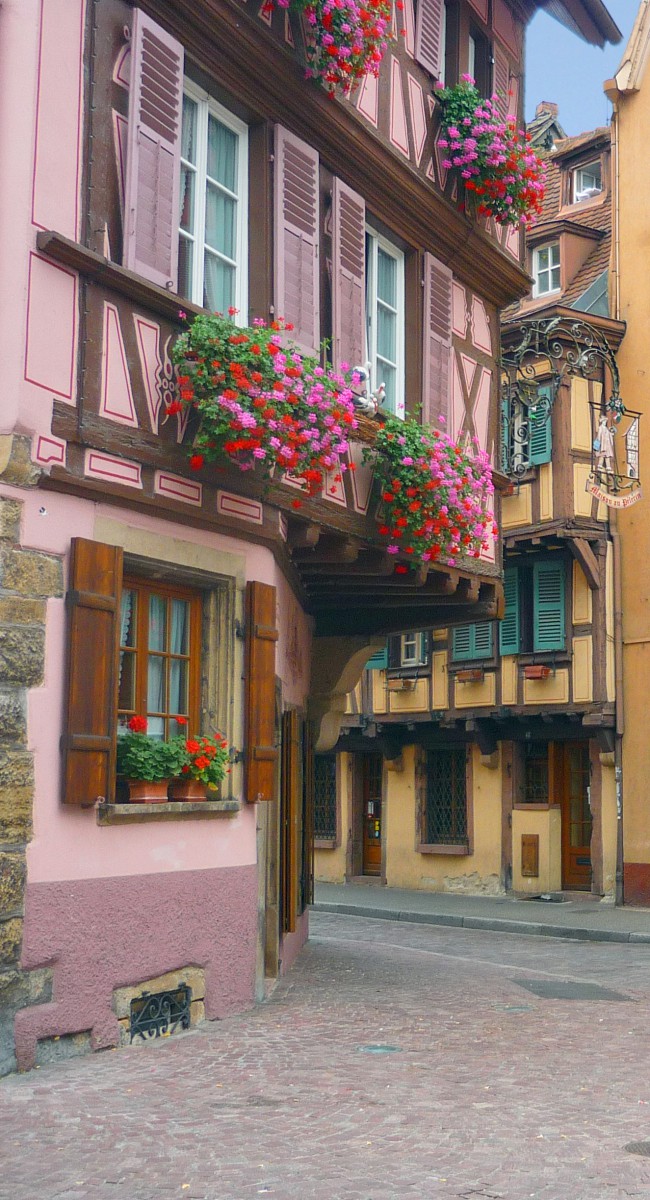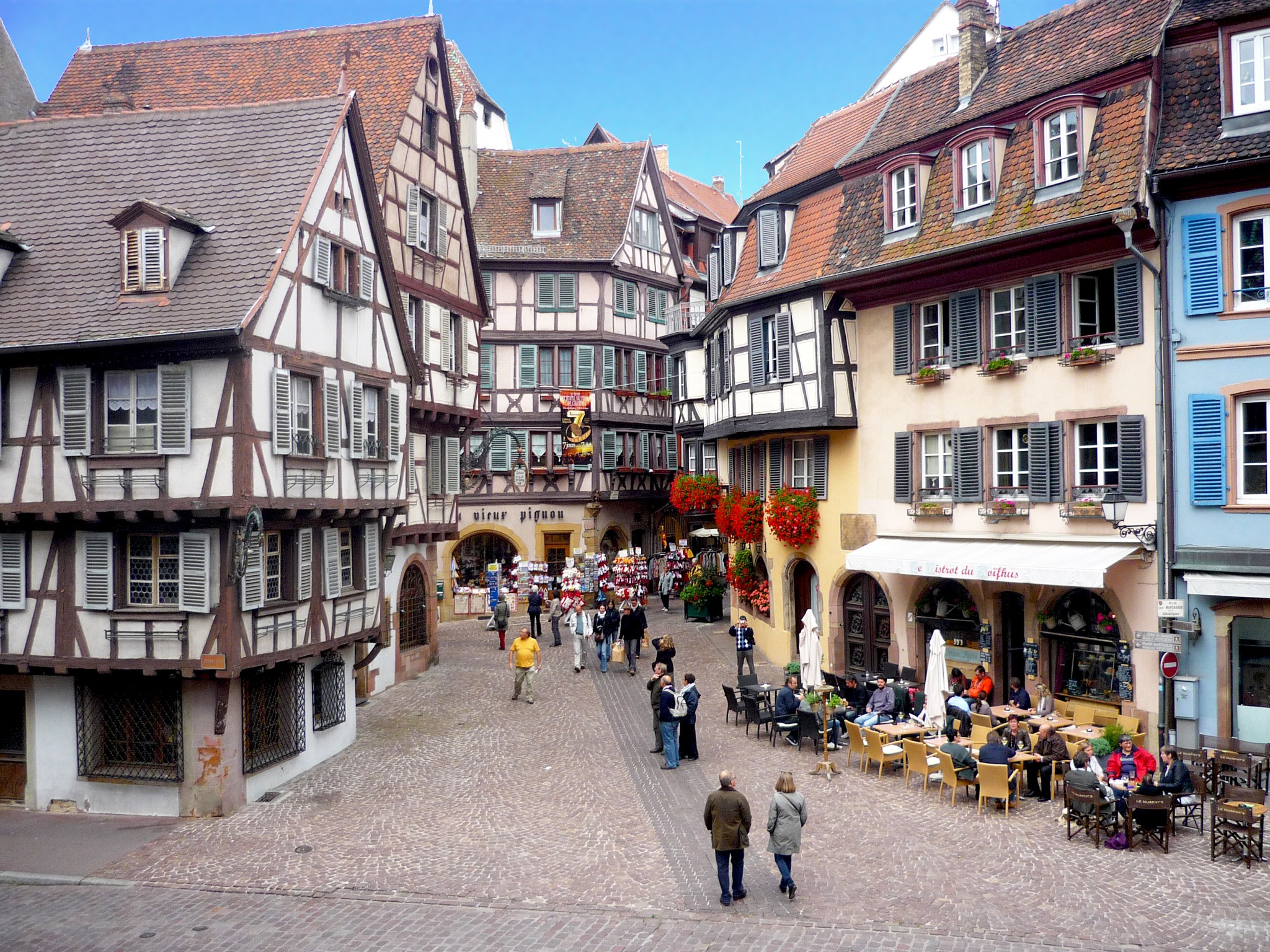This guided tour of Colmar Old Town begins at the beautiful little Unterlinden square (which means “under the lime trees” in Alsatian dialect). The square is well laid out, thanks to the Logelbach (“mills canal”) which crosses it. Follow the guide!
A walk across Colmar Old Town
Start your visit to Colmar Old Town by the famous Unterlinden museum.
The Unterlinden Museum
The Unterlinden Museum has a well-established reputation, thanks to its most precious offering: Matthias Grünewald’s “Isenheim Altarpiece” (Retable d’Issenheim). It is now France’s most visited Museum of Fine Arts, after those of Paris.
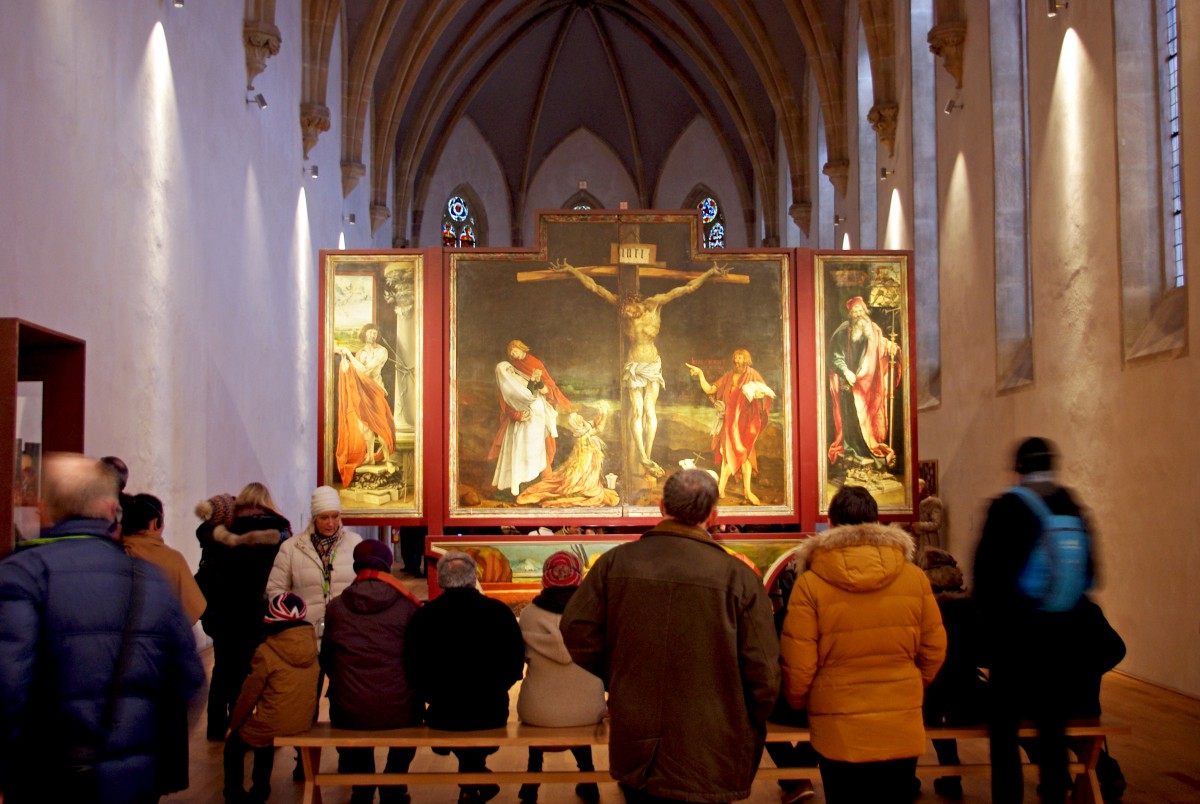
The old convent (church, cloister and conventional buildings) was built to house a Dominican order in the 13th century.
The museum displays collections of popular and decorative art from Alsace and the Upper Rhine, dating from the Middle Ages through to the Renaissance, as well as collections of archaeology, sacred art and modern art.
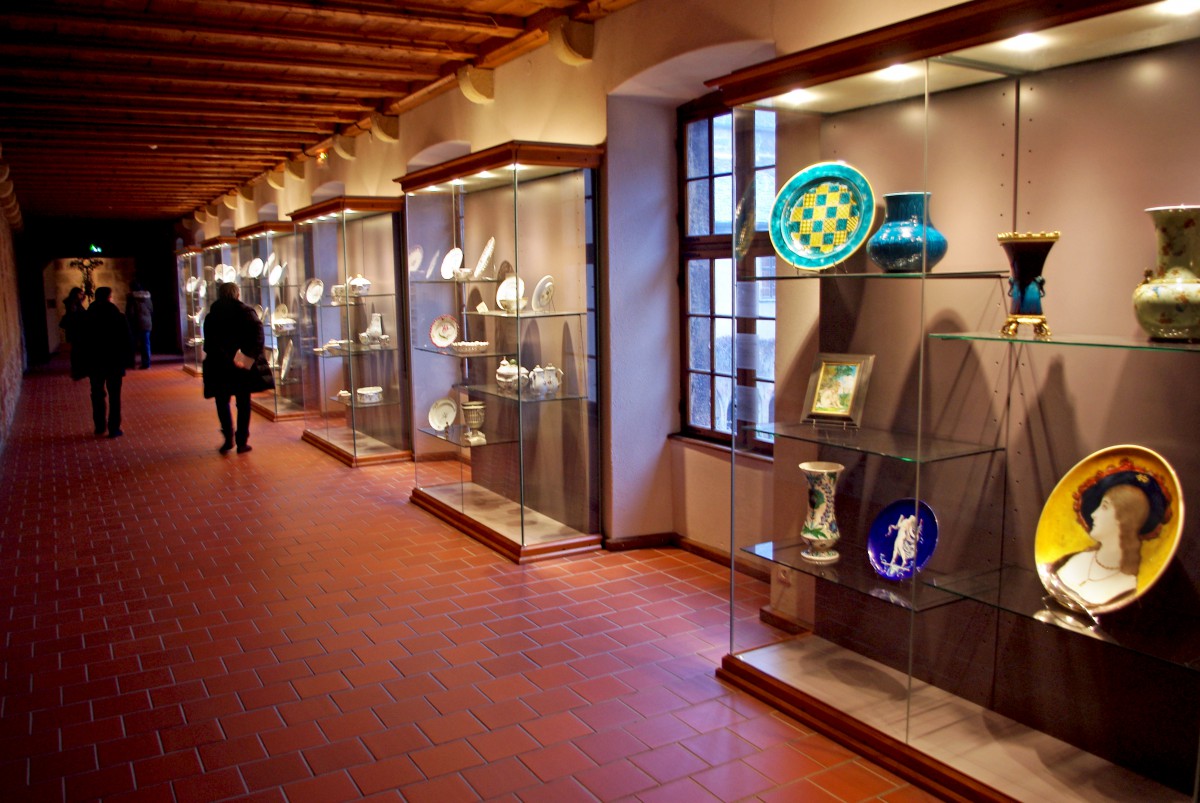
A focal point is the mummified head of local tyrant Peter von Hagenbach which can be seen here, as well as the sword of Colmar’s executioner slicing through it. Peter von Hagenbach was a knight of Sundgau origin who fought alongside Charles the Bold, Duke of Burgundy. Having invaded the Alsace Plain, the Duke entrusted the governance of the land to Peter von Hagenbach, a reputedly violent, brutal and ruthless man, according to his enemies.
The museum’s most admired masterpiece – the Isenheim Altarpiece – is displayed in the old Dominican church. Considered to be one of the major pieces of the history of European art, this work of art is disturbingly realistic, with its numerous details, the vigour of its characters’ expressions (the physical pain of Christ at the Crucifixion), the boldness of its colours and the visionary nature of its landscapes.
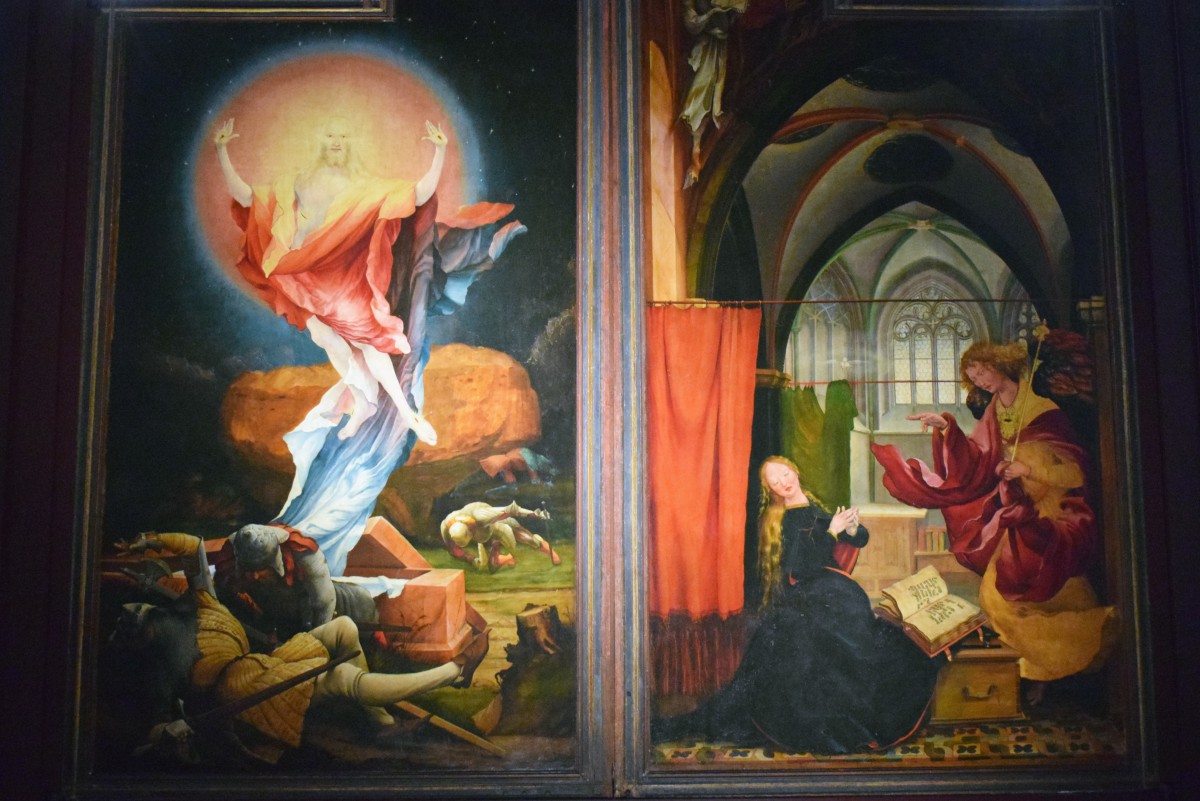
Another outstanding feature of the Isenheim Altarpiece is its size of 3.3m tall by 5.9m wide.
Matthias Grünewald created the paintings and Nicolas of Haguenau was responsible for the carvings. It is estimated that the altarpiece was completed towards 1500-1515 for the church of the Antonine Convent of Isenheim, in the south of Colmar.
The Antonine Order was founded in approximately 1070 in Saint-Antoine-en-Viennois, a small village in Dauphiné. The order’s purpose was to heal and help the sick, especially the victims of ergot poisoning contracted from eating rye bread. This was caused by a microscopic fungus that attacks the grain, and the poisoning caused terrible pain to those who fell ill with it. The illness (gangrenous ergotism) was also known as the “holy fire disease” or “Saint Anthony’s Fire”.
The hope was that by seeing the healing scenes represented in the altarpiece, Saint Anthony could intercept and help the sick, many of whom were pilgrims travelling through Issenheim on their way towards Saint James of Compostela.
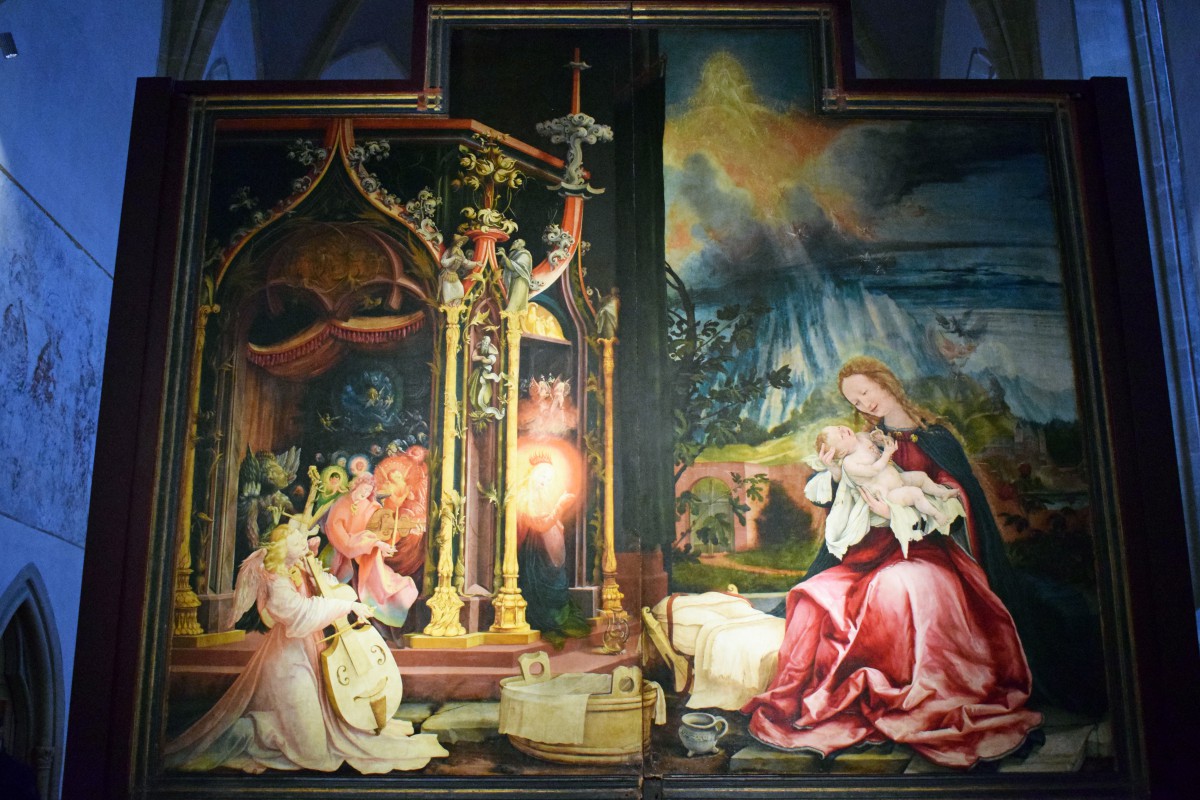
The altarpiece is of late Gothic style (the Renaissance was only just emerging in the region) and is composed of a central carved box, two fixed shutters and two series of pivoting shutters. It is a polyptych altarpiece. When the altarpiece is closed, it displays the Crucifixion, the Entombment, Saint Sebastian and Saint Anthony. The first opening depicts the Annunciation, the Resurrection, Concert of the Angels and the Nativity. The second opening includes Saint Anthony’s visit to Saint Paul in the desert and the Temptation of Saint Anthony. The statues on the central box are only visible at Saint Anthony’s Feast.
Find out more about the Unterlinden Museum.
At the Museum’s exit, turn right and head towards Place des Martyrs et de la Resistance, adjacent to Place d’Unterlinden in the direction of the Monoprix supermarket. At the tearoom, “Pâtisserie du Musée” (a pretty half-timbered house with frescos), take Rue des Têtes on the right, until you reach number 19.
The Maison des Têtes (House of the Heads)
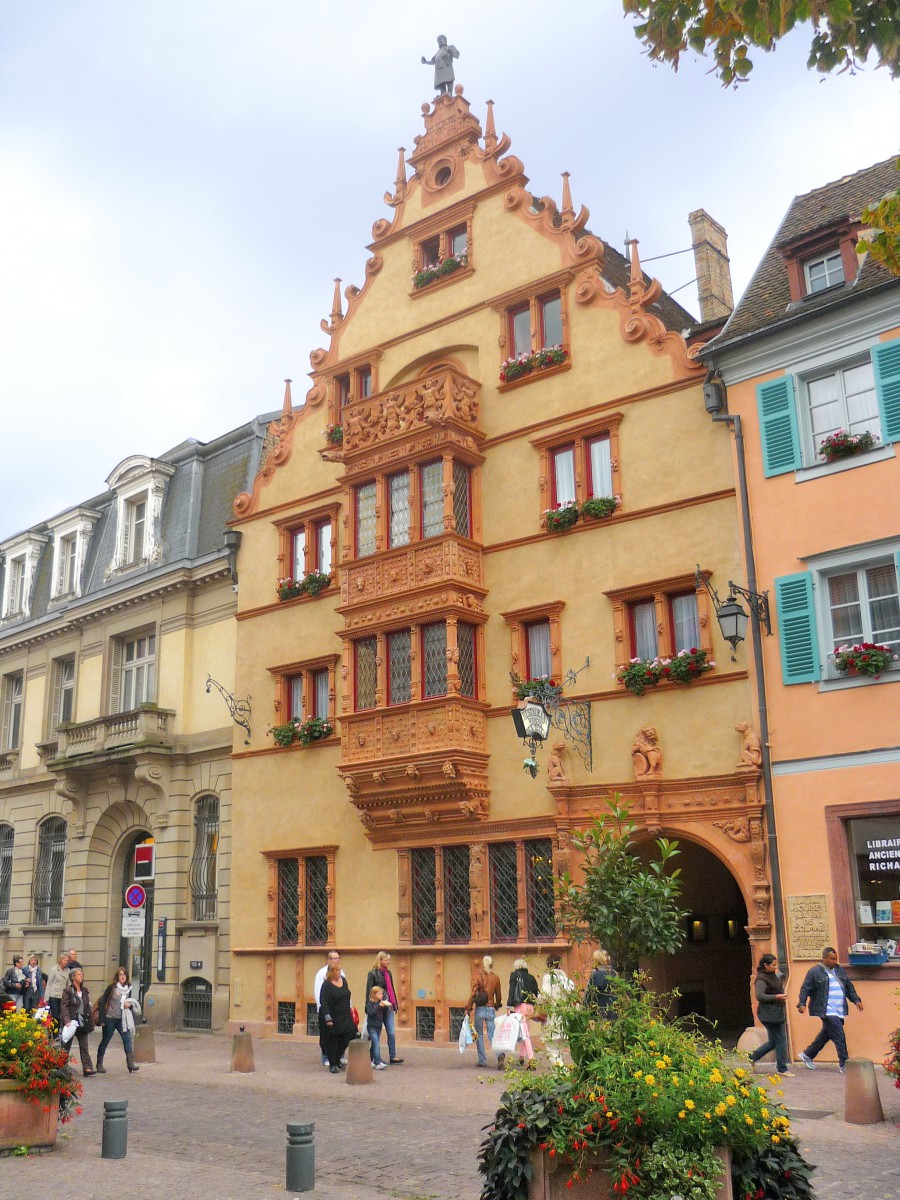
This remarkable house of Rhineland Renaissance style was built in 1609 on behalf of the wealthy merchant, Anton Burger. What sets it apart are the 111 heads (or grotesque masks) that adorn its façade. The building’s gable is surmounted by a cooper, which is the work of the sculptor, Bartholdi (1902). A beautiful three-storey bay window beautifully decorates the façade. The residence evokes the golden age of the commercial bourgeoisie of the time. A decade later, the Thirty Years’ War put an end to the temporary prosperity enjoyed by the city and all of Alsace.
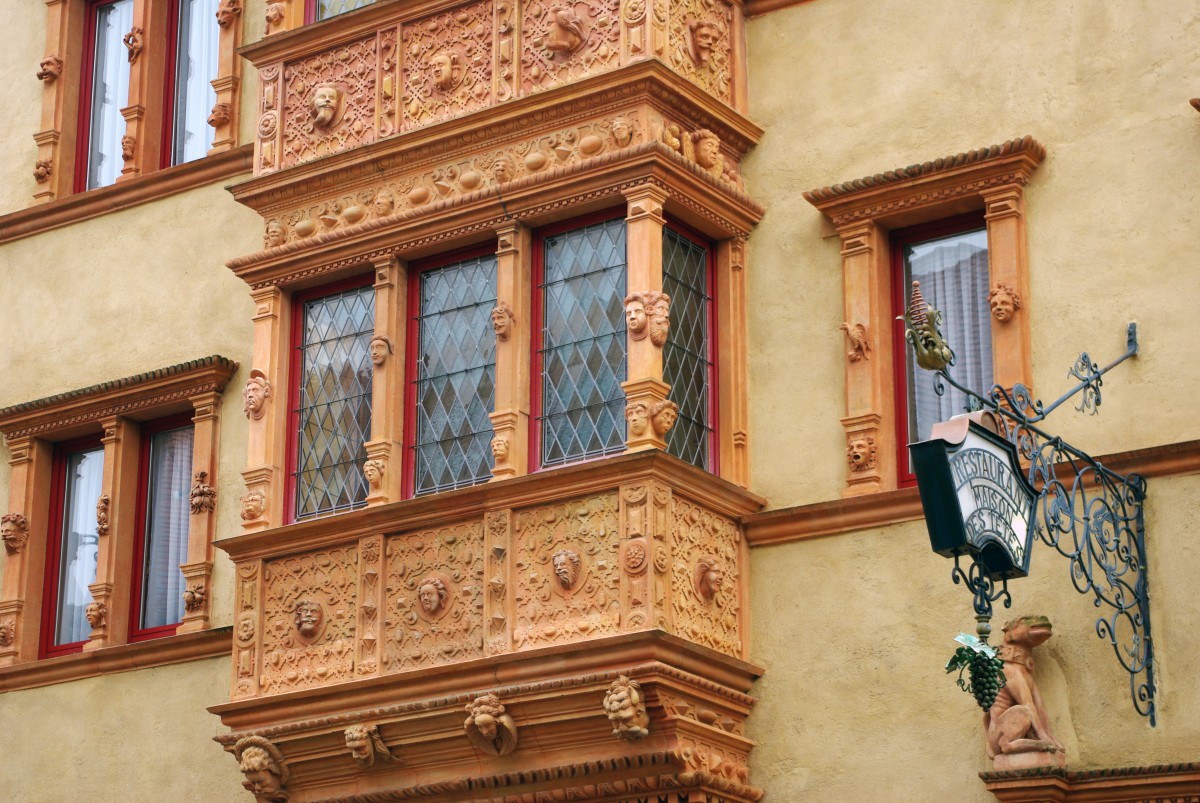
Beyond the entrance gate, you can access a pretty and peaceful shady inner courtyard that leads to the open-air restaurant at the four-star Hôtel des Têtes.
Continue walking along the Rue des Têtes, then turn right onto Rue des Boulangers, which is a little shopping street lined with some beautiful half-timbered houses, one of which features a beautiful forged-iron sign. At the end of the road, the Dominican Church can be found on the left, in the enchanting setting of the green and leafy Rue des Serruriers.
The Dominican Church

The old Gothic-style church of the Dominican order thrusts forth, like a great ship, along the Rue des Serruriers up to Place des Dominicains.
The church meets the demands of the mendicant orders, being rather bare and without a bell or a transept. The portals, however, do contain some beautiful carvings.
The church was built between 1283 (the first stone was laid by Rudolf I of Habsburg) and 1346.
Inside, you get a strong sense of elevation, thanks to the long pillars without capitals that support the length of the nave.
The chancel features a major work by Martin Schongauer from 1473, entitled “Madonna of the Rose Bush” (or Virgin in a rose garden). The altarpiece depicts the Virgin and Child seated before a rose flower on a gold background, with two angels holding his crown. The picture itself is full of symbols: the crimson rose (an archetypal marital flower), a single white rose (death, perhaps the future Passion of the Christ), wallflowers (the Cross of Christ), lilies (the Saints and Martyrs), strawberries (their white flowers symbolising purity and innocence, the three lobes of its leaves are an allusion to the Holy Trinity and their red fruit evokes the blood of the passion and of the martyr saints), the peony (Pentecost rose with healing properties), the robin (passion), and the sparrow (modesty).
These comments are displayed on signs inside the church. There is an entry fee for the church (1.50 euros for adults, and 0.50 euro for children).
The buildings adjacent to the old convent (the municipal library) are located behind the church and feature a beautiful gothic cloister surrounding a charming garden.
Continue the tour by continuing the walk in the little Rue des Serruriers, which is surrounded by a half-timbered house that the Voyages Thomas Cook agency now operates out of, towards the Collégiale Saint Martin.
The St. Martin Collegiate Church
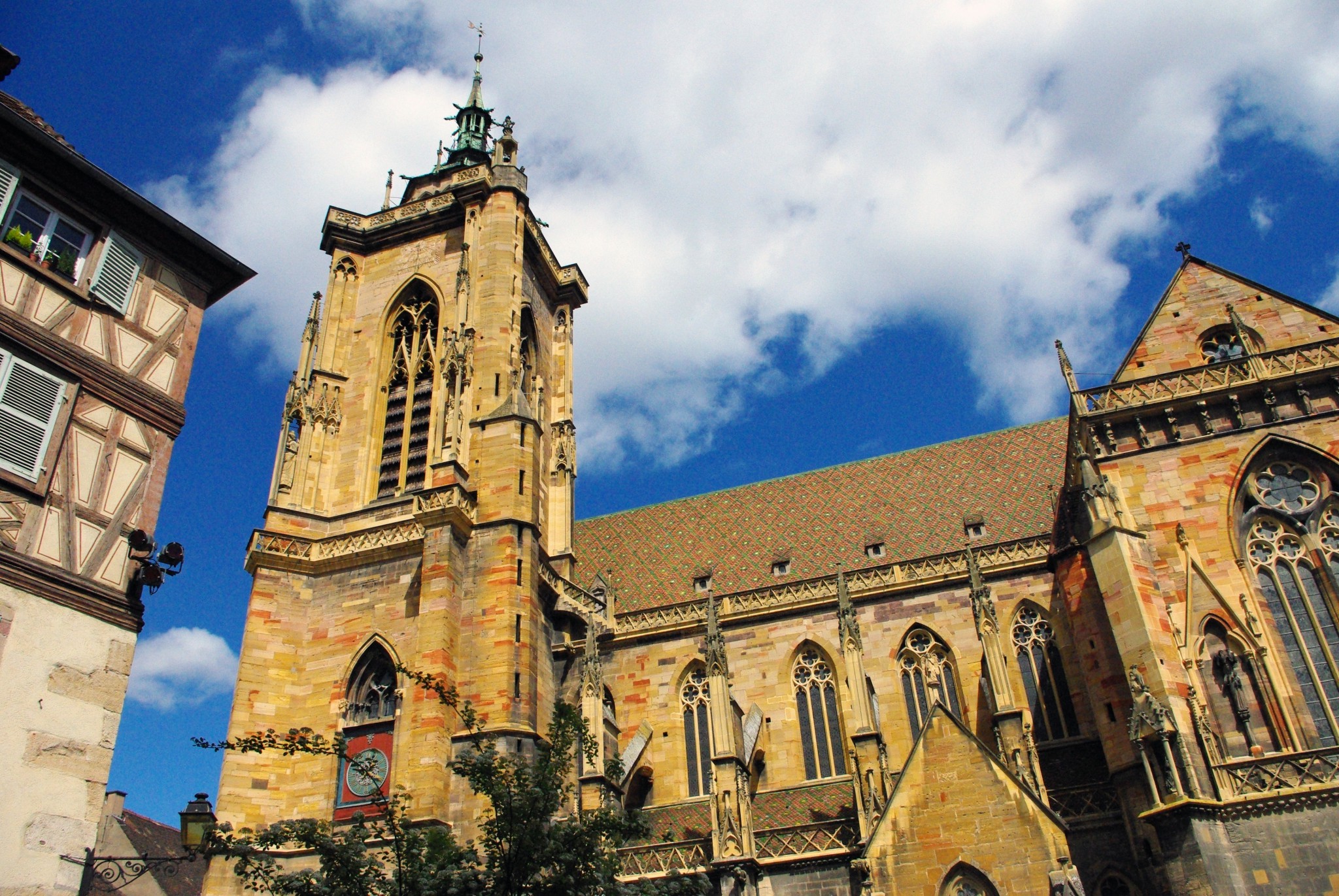
This church is the most imposing in all of Colmar, and carries the name of “Cathedral”. However, this is more or less a misrepresentation, since the city was never the seat of a bishop. Find out more about Colmar Collegiate Church.
The houses lining the other side of Place de la Cathédrale are among the oldest in Colmar.
The district of the Rue des Marchands

On the cathedral square, Adolf House (1350) is the oldest house in Colmar. Its two first floors with their arched windows date from the second half of the 14th century, while the third floor and the half-timbered gable are from the 16th century. The house underwent serious renovations in 2000.
To the right, the building of the city’s Old Body Guard, from 1575, features a magnificent Renaissance loggia (1577-1582). It is from here that the magistrate of the city preached his sermons and announced the convictions of guilty inhabitants.
Exit the Place de la Cathédrale by the path under the arcades between the two historic buildings, to return to Rue des Marchands.
Rue des Marchands is a small medieval walkway comprising one of the most beautiful groups of half-timbered and wood-panelled houses in Colmar: the Schongauer House, the Viole House, and the Swan House, without forgetting the building of the Bartholdi museum and the famous Pfister House.
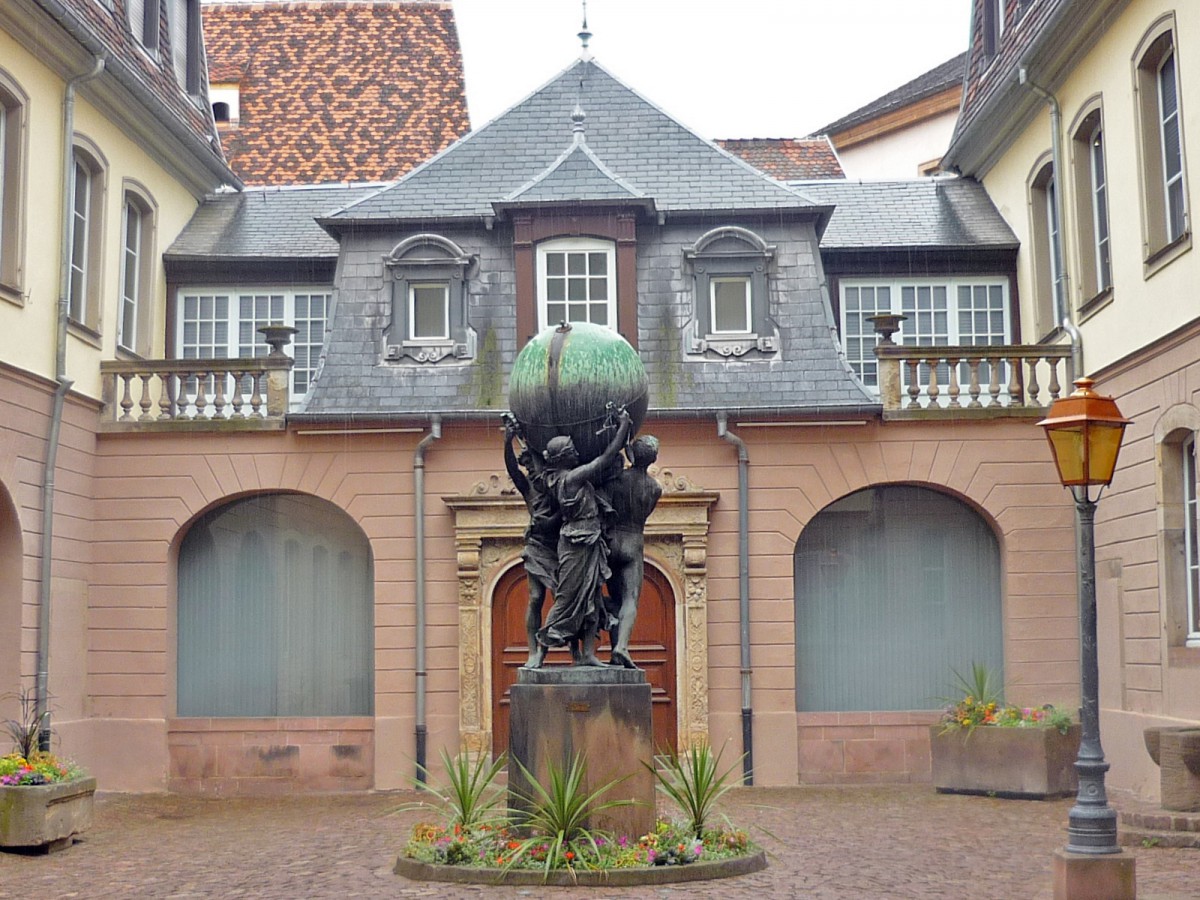
The Bartholdi Museum is located in the hotel belonging to the family of the sculptor who had owned it since the Revolution. The famous sculptor, Auguste Bartholdi (1834-1904), was born in this building which was modified in the 18th century. He built, among other things, the monumental Belfort Lion and the Statue of Liberty in New York City.
The Schongauer House faces towards Rue des Marchands and Schongauer. Martin Schongauer, engraver and medieval painter, was born in Colmar around 1450. He would have lived in the “Huselin zum Schwan” (little swan house) from 1477 to 1490, on the corner of Rue Schongauer and Rue des Marchands. A gothic bay window decorates its façade on Rue Schongauer. The works of Martin Schongauer were very appreciated in his time, notably by Michaelangelo and Albrecht Dürer. He was the author of the altarpiece “Madonna of the Bush Flower”, which is on display in the Dominican church. The first floor currently houses an art library.
On the corner opposite Rue Schongauer and Rue des Marchands is another building, which also belonged to the family of a painter: the Maison à la Viole. According to the commemorative plaque on the wall of its façade (on Rue des Marchands), it was built in 1383 and belonged to the Schongauers from 1465 to 1583.
Opposite the Maison à la Viole, the Pfister House is part of the beautiful bourgeois residences built in Alsace, much like the Kammerzell in Strasbourg. It takes its name from the Pfister family who were the owners of it from 1842 to 1892.
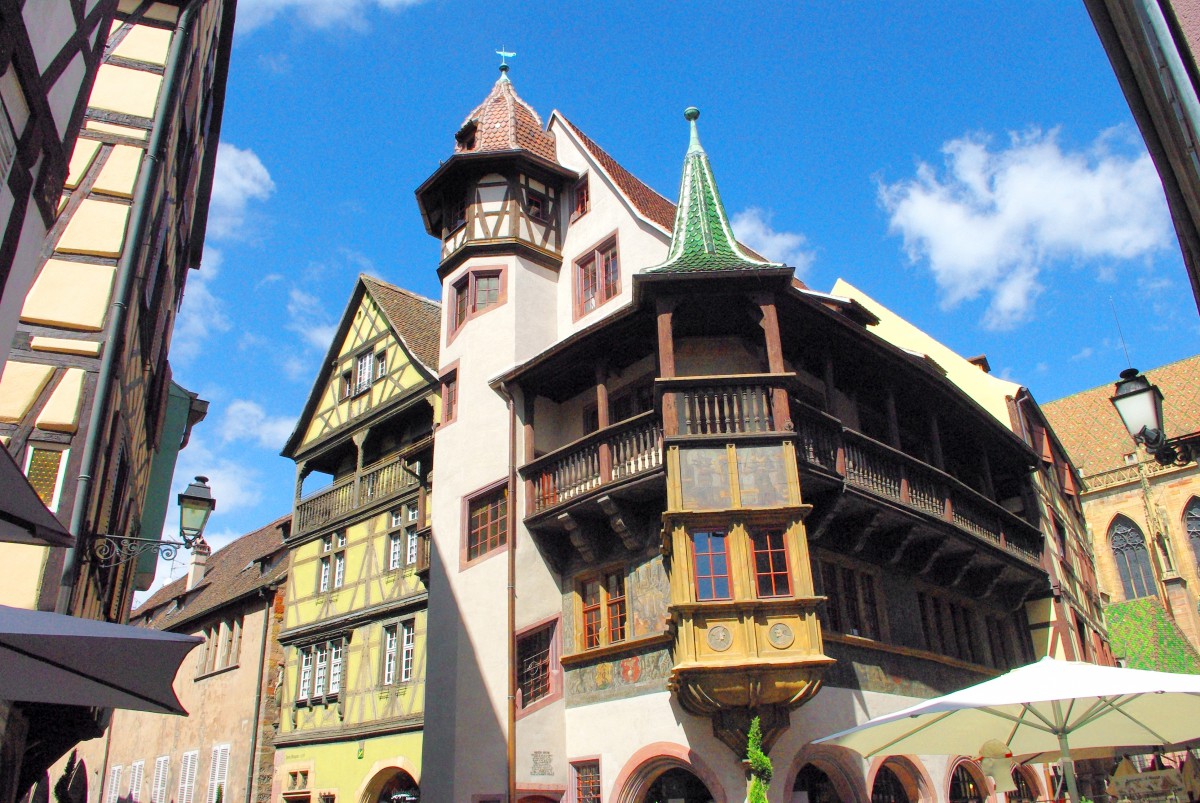
The jewel of the Renaissance in Alsace, the Pfister House was built in 1537 for Ludwig Scherer, a hatter from Besançon. Its peculiarity lies in the fact that it features typical elements of the Middle Ages and the Renaissance. In fact, it is even medieval in its conception, as it was built in stone and wood with a long wooden balustrade and a magnificent two-storey bay window, all of which was surmounted by an octagonal tower. The decorations, on the other hand, were of Renaissance style and included paintings adorning its facades, depicting the emperors of the Holy Roman Empire from the 16th century, the four evangelists, church fathers, allegorical figures and biblical scenes and characters.
Have a peek of rue Mercière and its beautiful half-timbered houses which leads to the St. Martin Collegiate church.
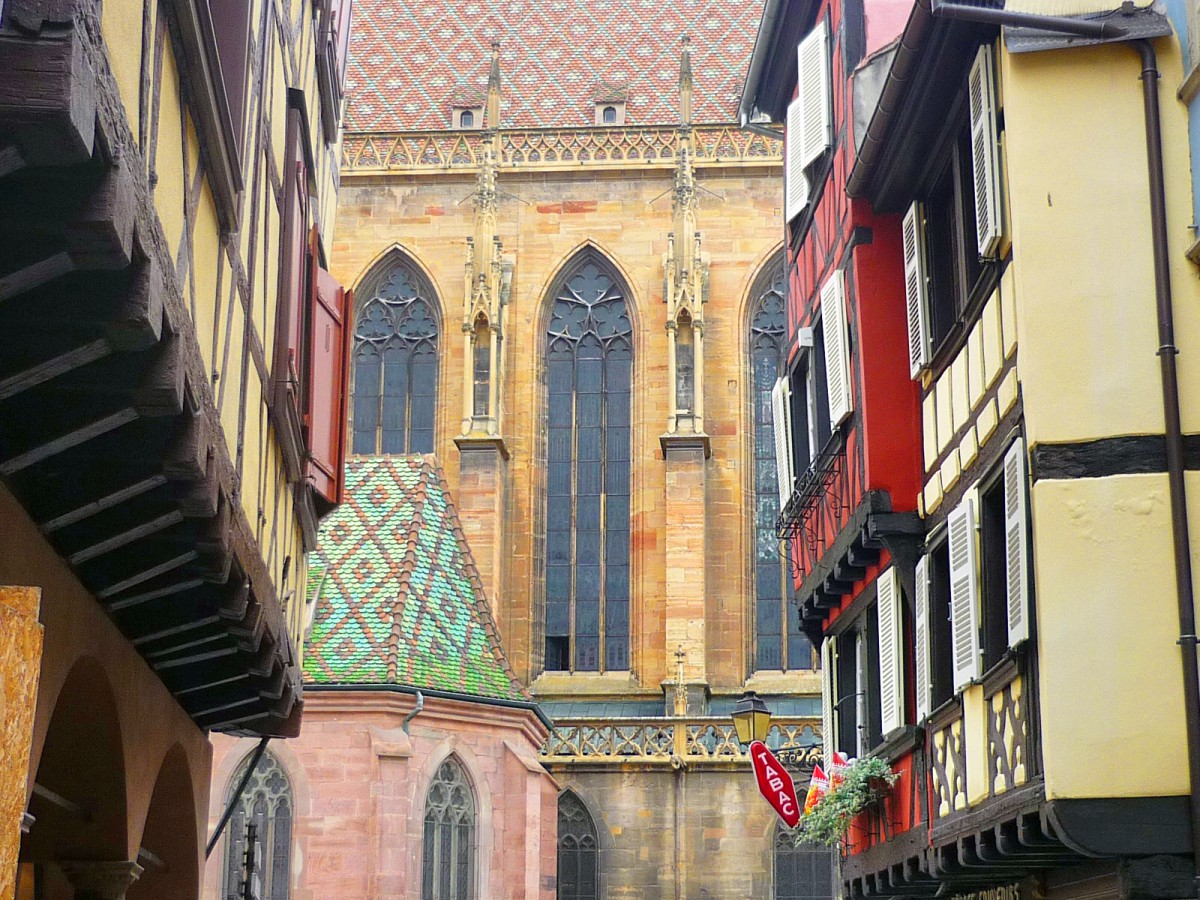
Beside the Pfister House, the Zum Kragen House features a polychrome wooden statue depicting a bearded Renaissance character.
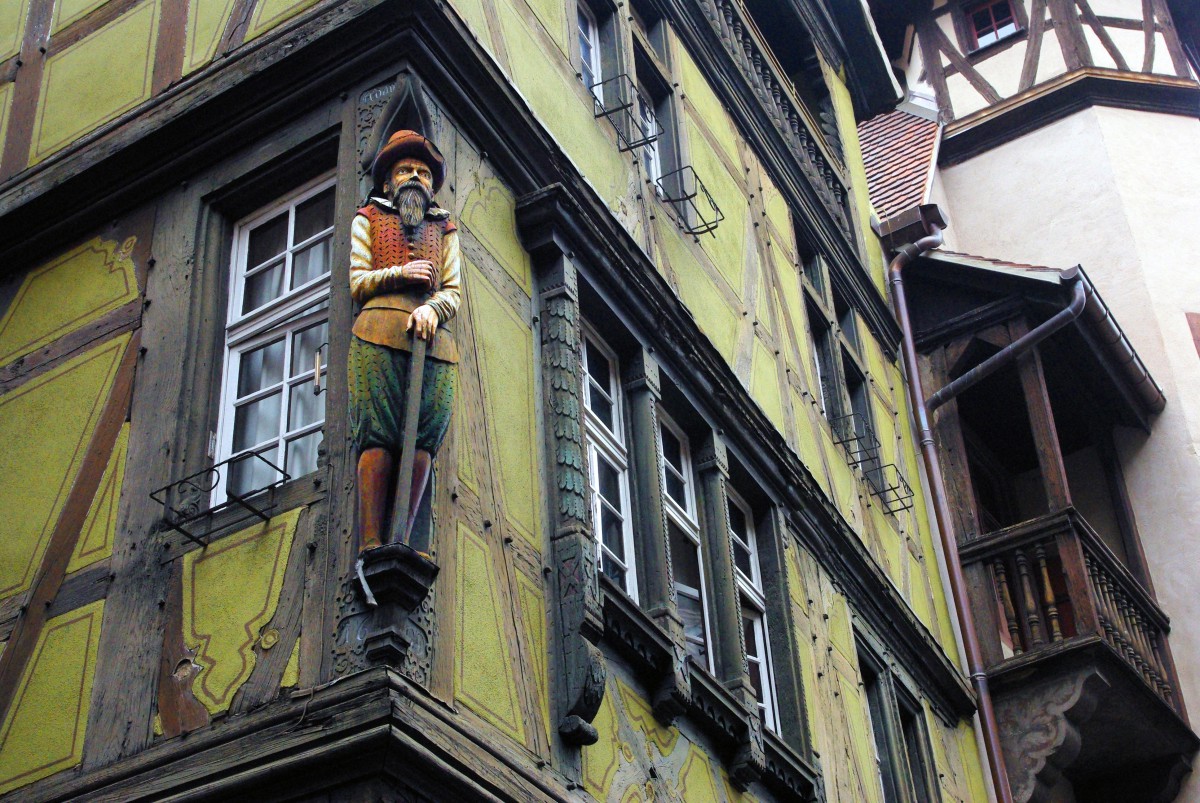
The house “Chez Hansi” also known as the “House of Austria”, is a beautiful half-timbered residence. One of its walls features a commemorative stone: “the banishment stone”. It evokes the year 1538 when the Duke of Austria intervened during an uprising of nobles in the city. The houses of the rebels were destroyed and the duke deemed it fit to inscribe this judgement on the slab. The house now houses a very fine restaurant.
Go down Rue des Marchands to reach the Old Customs House.
The Old Customs House (Koifhus) and its district

The imposing building of the Old Customs House (or Koifhus – Ancienne Douane in French), covered in glazed tiles, is a mecca of the political and economic history of the Colmar old town.
Built in 1480, the building had two uses: on the one hand, it was a storeroom for goods that were taxed upon entering the city, and on the other hand, it was the city hall. In the Middle Ages, imported merchandise that was subjected to the local tax, the Zollgeld, was stored on the ground floor.
On the first floor are rooms where the representatives of the ten free cities of the Décapole would meet.
The Decapolis (la Décapole). In 1354, Emperor Charles IV combined the alliance of 10 free Alsatian cities at the heart of the Holy Roman Empire into one league: the Decapolis. The union included Colmar and nine other Alsatian cities: Haguenau, Kaysersberg, Wissembourg, Turckheim, Obernai, Rosheim, Munster, Sélestat, Mulhouse (Landau from 1515 onwards) and Seltz (from 1358 until 1414). The Decapolis was defined by a military alliance and, something especially rare at the time, financial mutual aid in the event of bankruptcy. After the joining of Alsace to France, Louis XIV ordered its dissolution in 1674.
From the side of the Rue des Marchands, the right portal is surmounted by a bicephalous eagle, the symbol of the Habsburg family, and as such of the emperors of the Holy Roman Empire, on which the Décapole directly depended.
The view from the top of the stone steps of the Old Customs House is one of the most picturesque that Colmar has to offer. Here you can discover another angle of the pretty cobblestone street of the Marchands, lined with magnificent half-timbered houses: the houses “Au Fer Rouge”, “Chez Hansi” and “Au Vieux Pignon”.
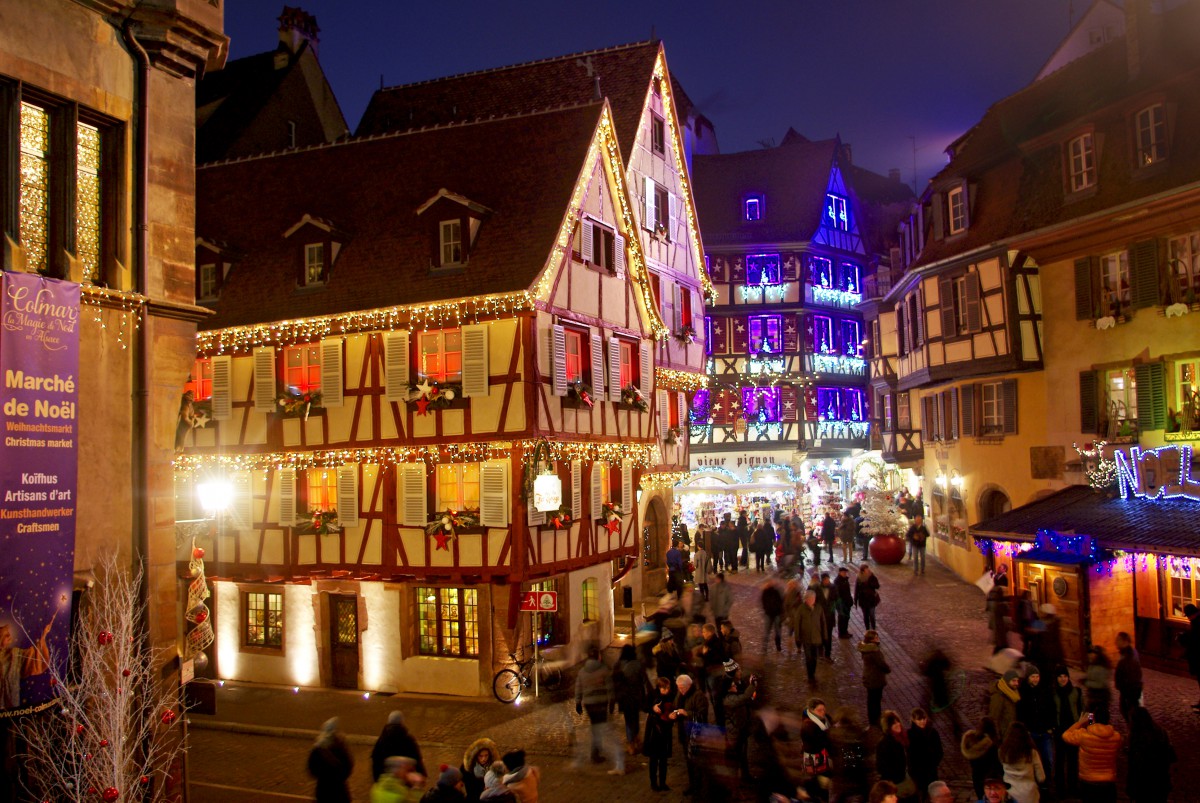
Passing the verandah of the Old Customs House, you can access the beautiful square “Place de l’Ancienne Douane”, from where you can admire the rear of the building (16th century). The turret staircase of cut pieces topped with a steeple lead to a wooden gallery that in summer is decorated with pretty geraniums.
In the centre of the square stands the Schwendi Fountain, which is surmounted by a statue of Bartholdi, depicting the general who would have introduced the Tokay grape variety to Alsace.
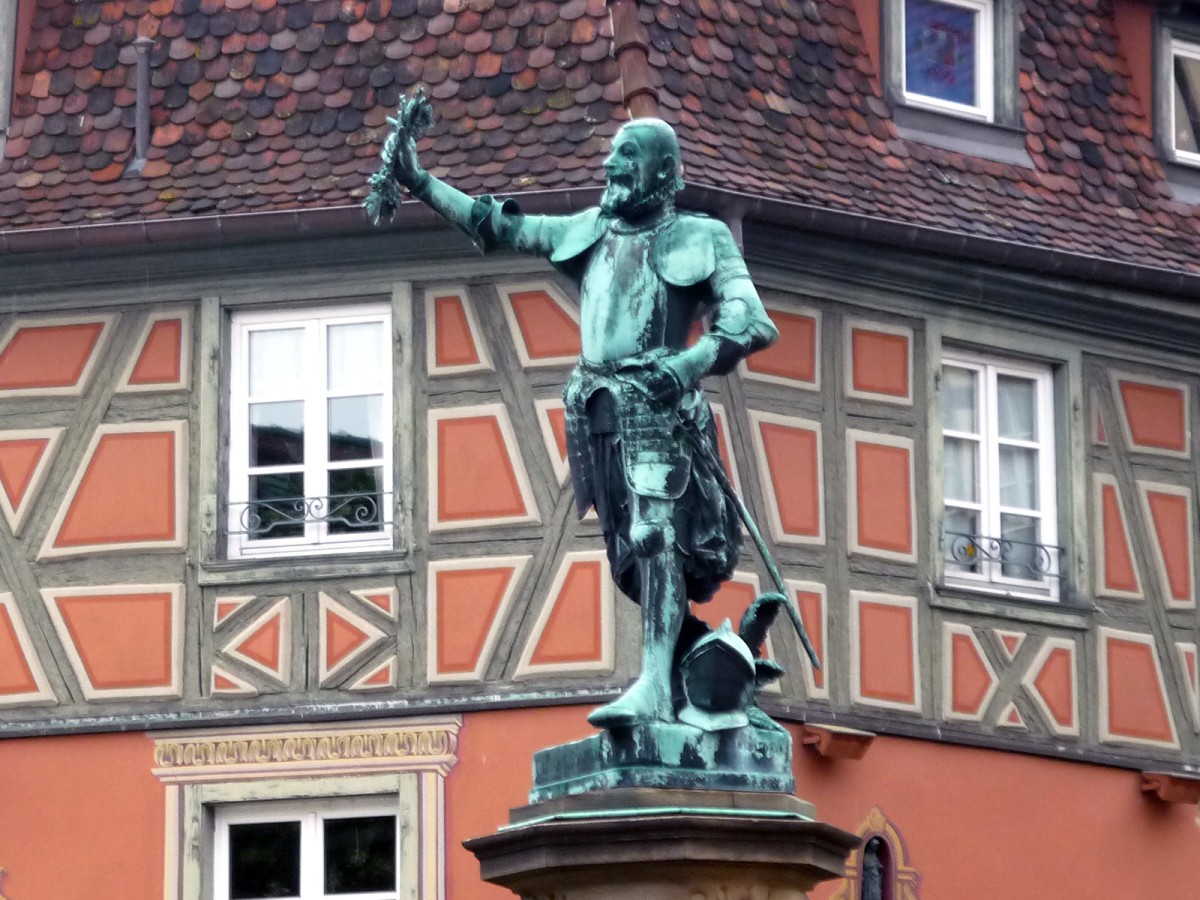
The Place du Marché aux Fruits is bordered by the Old Customs House and, opposite, by the Kern House, a Renaissance-style Rhineland building with its superb scrolled gable and its pinnacles. Built in 1597, it dominates the Square from the height of its five storeys which are broken up by cornices. It bears a resemblance to the Oeuvre Notre Dame House in Strasbourg.
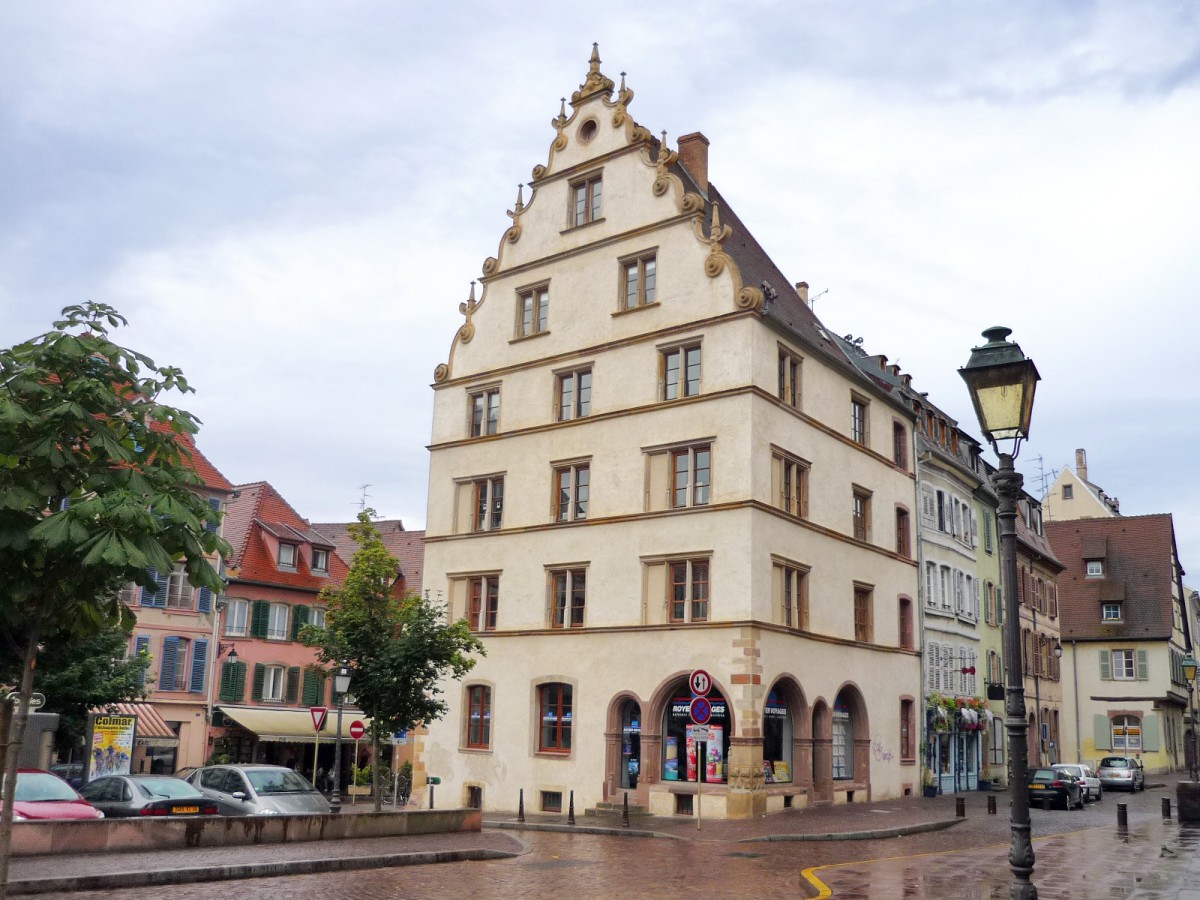
To the right of Kern House is the Civil Tribunal building, of classical architecture and built in pink sandstone from the Vosges following the joining of Colmar to France from 1764 to 1771. It used to be the seat of the Sovereign Council of Alsace, the justice body for the entire province. With its dissolution during the French Revolution, Colmar welcomed the new Court of Appeals for the Alsace region, reconnecting with its past.
Turn back and walk along the Grand’Rue towards the Temple of Saint Matthew. The House of the Arcades is located before the temple.
The Protestant Temple of St. Matthieu

The Temple of St. Matthew is a very bare, Gothic-style building that met the criteria set by the mendicant orders. It was completed around 1335.
Prior to the Reformation, the church and its annexed buildings were part of a Franciscan convent. Following epidemics of the plague in the 16th century, the monks sold the church and its land to the city in order to turn it into a hospice. Some years later, in 1582 the Magistrate of Colmar consecrated the church to the Lutheran Protestant religion.
In 1679, the law of “simultaneity” was enacted, which allowed for two religions to occupy the same church. Louis XIV wanted to impose on Alsace a rule that the nave would be reserved for the Protestant religion, and any community with at least 7 Catholic families would have access to the church chancel. As a result, the Catholics had the right to the chancel and the Protestants to the nave. The law was enforced in Colmar and materialised on 11 March 1715 in the Temple of Saint Matthew. During the night, a wall was raised between the nave and the chancel to the arched ceiling and two doors could be seen in the chancel, one looking over the city to the north, and the other over the hospital to the south. This Alsatian oddity explains the presence of two bell towers on the roof of the building; one for the Protestants and one for the Catholics.

Inside, a stone rood separates the chancel from the nave and supports a large 17th century Christ on the Cross. The church also features incredible stained glass windows, including one from the 13th century, called “the Small Crucifixion”, depicting Chris on the cross, surrounded by the Virgin Mary and John the Apostle. Another stained glass window called “the Great Crucifixion”, dates from 1478-1480 and is attributed to Peter von Andlau.
On Place du 2 Février, the huge Old Hospital building was built in the 18th century and served as a central hospital until 1937. Its tall roof is pierced with dormer windows. It is now abandoned but is scheduled to be restored in the near future.
The House of the Arcades (Maison des Arcades) is located next to the Temple of Saint Matthew and borders the Grand Rue. This magnificent Renaissance building was the residence of the pastor of the Parish of Colmar (Presbyterian). Each side of the building is adorned with a scrolled gable and a bay window. The passageway, pierced with arcades, also contains a few boutiques.
Turn back around towards the Old Customs House. Pass in front of the Schwendi Fountain and along the small canal in Rue des Tanneurs.
The Tanners District

The Tanners’ District is bordered by the mills’ canal, surrounded to the west by the Rue des Tanneurs and to the east by the Petite Rue de Tanneurs. Tall, straight half-timbered houses from the 17th and 18th centuries are surmounted by attics that were used to dry the skins. This is a testament, still, to the former activity of the tanners.
The mills’ canal is a derivation of the nearby Lauch. The treatment of skins necessitated a nearby water source that was reserved for the tanners work in order to avoid pollution and bad smells reaching the rest of the city. The district was completely restored in the 1970s.
Both streets lead to the Quai de la Poissonnerie – Colmar’s other famous district: the Little Venice.
From the “Little Venice” District back to the Old Customs House
In the Krutenau district, the city gives way to the village atmosphere that is typical of traditional Alsace: the Little Venice district of Colmar.
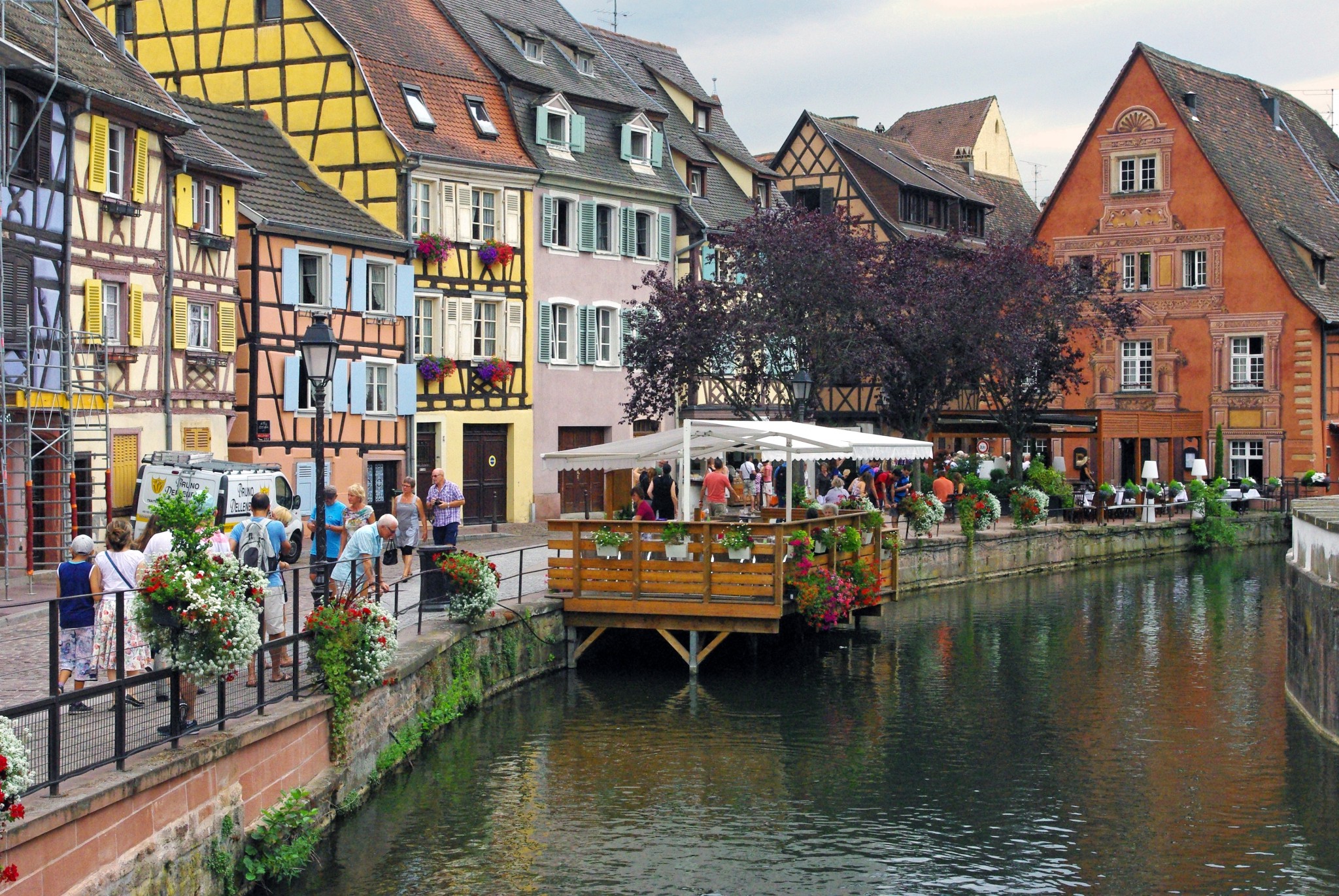
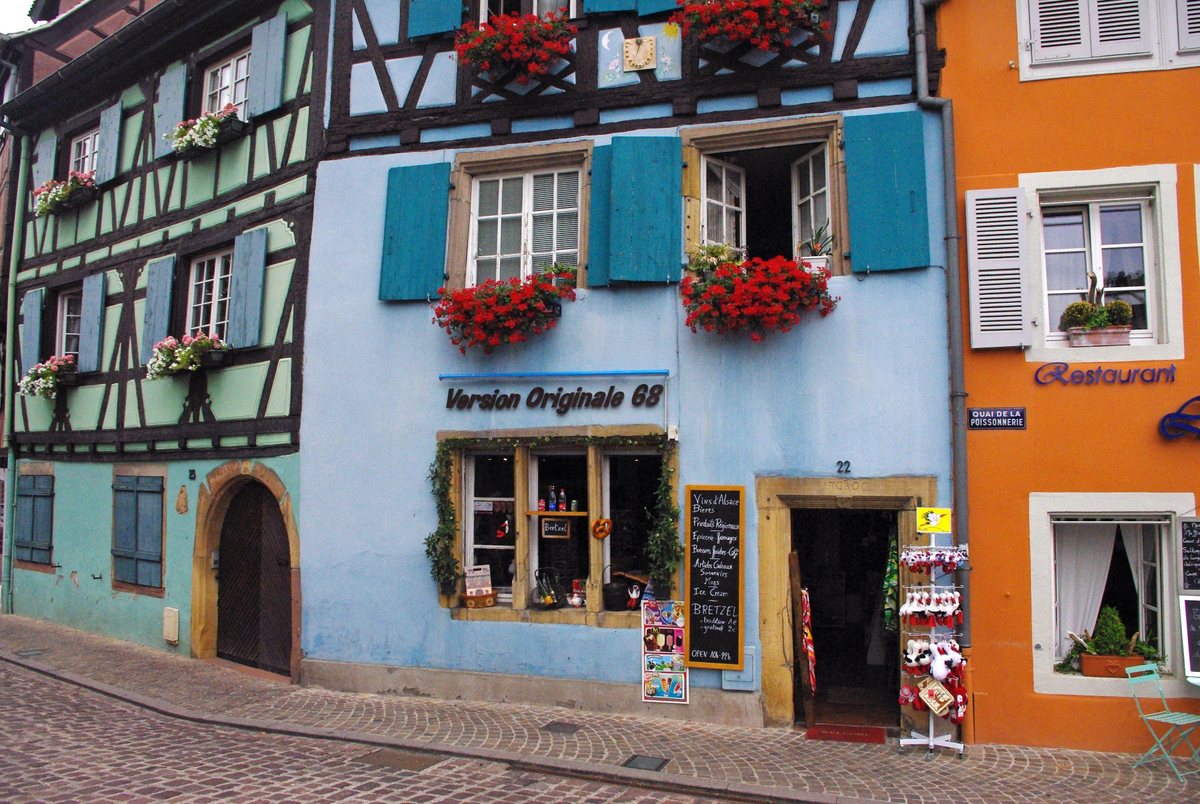
Continue the tour by walking along Rue de la Herse, then along the boardwalk at the edge of the Lauch. In summer, otters can often be seen here!
The stunning view of the district from the Saint-Pierre Bridge, to the far south of Little Venice, is one of the most photographed views of Colmar. Busloads of tourists stop here to allow visitors to admire the view of the river reflecting the old half-timbered houses.
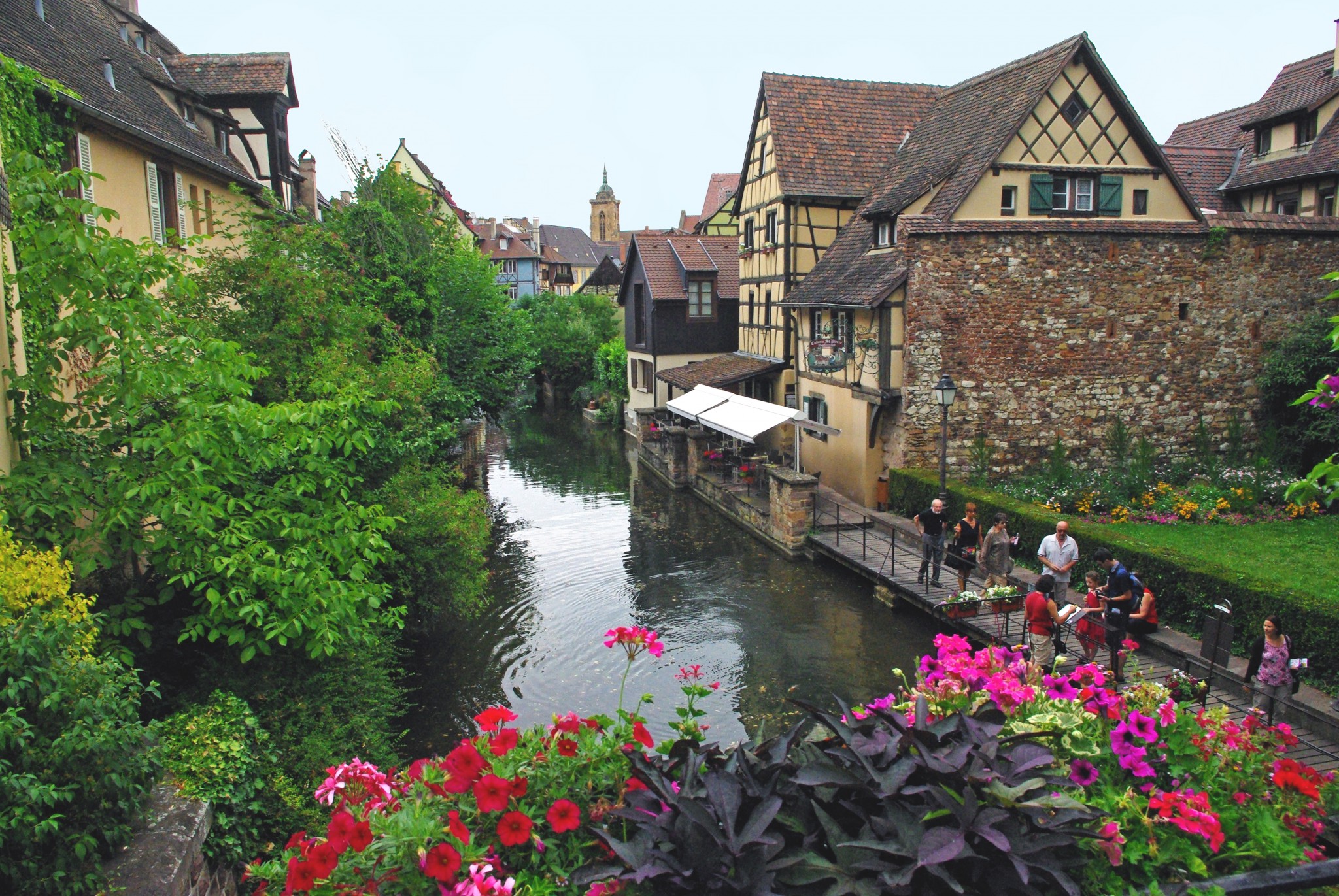
At the Saint-Pierre Bridge, turn right and follow Saint Pierre Boulevard until the intersection with Rue du Manège. Take the road to the right until you reach Place des Six-Montagnes-Noires.
The beautiful fountain in the centre of the Place des Six-Montagnes-Noires, surmounted by a statue of Colmar hero, Roesselmann, is the work of Bartholdi (1888). From here, the little bridge on the right offers a magnificent view over the Little Venice district.
From Place des Six-Montagnes-Noires, continue straight ahead along Rue Saint Jean. A few metres after the crossroads with the Grand’Rue, the Knights of Saint John Hospitaller contrasts with the surrounding district.
Despite its name, the Knights of Saint John Hospitaller never had anything to do with the order. The façade of the Knights of Saint John Hospitaller (1608) features the style of Venetian palazzo with its two superimposed Renaissance-style galleries that frame an inner courtyard. But don’t be fooled, the balustrades are not from that period; these identical replicas were built in the 19th century.
Continue along Rue Saint Jean to reach the Place du Marché aux Fruits and the Old Customs House.
Have you been to Colmar? Why did you like this town? Share your experience in the comment box below!
Check out the website of the Colmar Tourist Office for more info.
Book your stay in Colmar!
My advice: don’t wait too long before booking your accommodation in Colmar, particularly at Christmas!
The Colmar Christmas market and the Summer season draw many people, and hotel and short-term rental availability tends to go very quickly.
To book your accommodation in Colmar, click on this affiliate link, which will redirect you to our partner booking.com… or use the interactive map below:
PIN IT for later!
